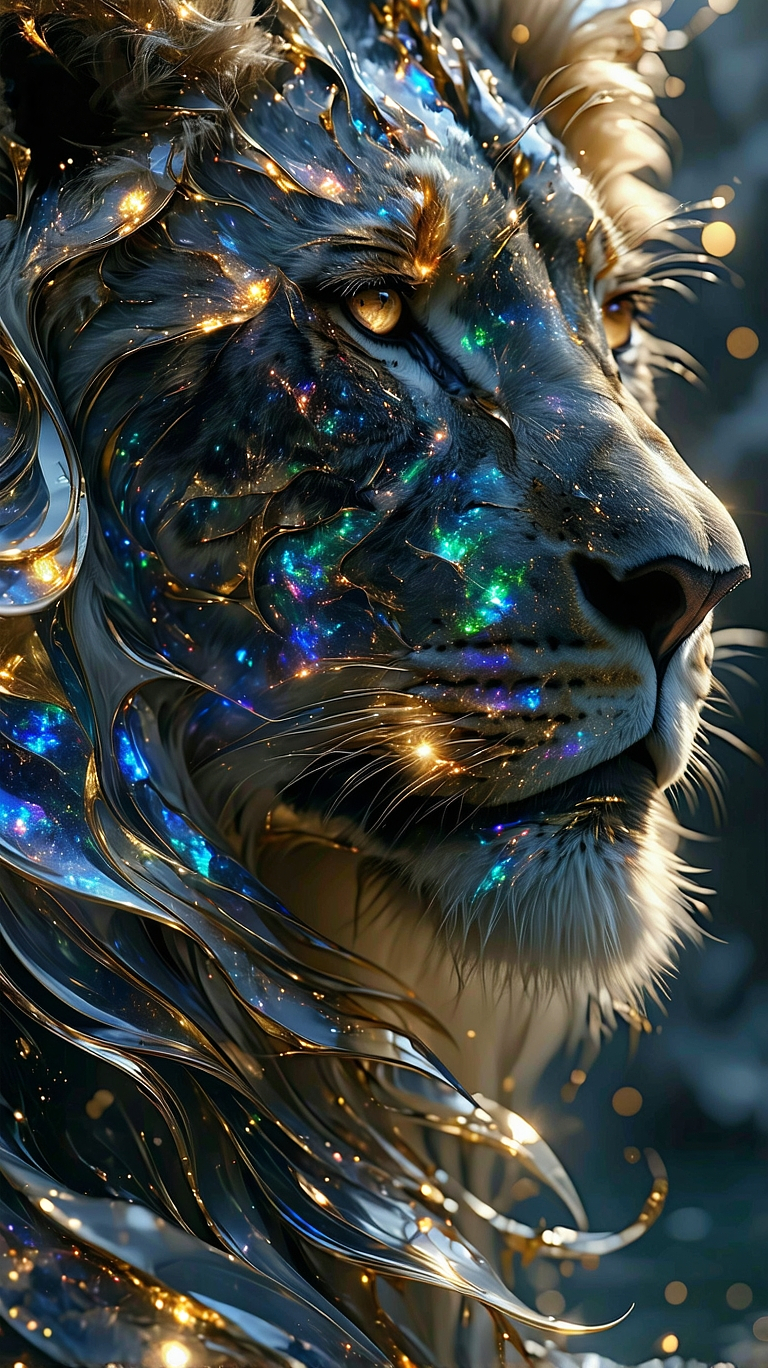7 months ago
Two ethereal figures entwined in a celestial embrace float above a mirrored cosmic lake, their bodies woven from stardust and iridescent light. Their faces are radiant yet undefined, reflecting the universal duality of love—fated connection and free will, passion and soul recognition.
Above them, a monolithic, holographic heart hovers, fracturing and reforming in infinite loops, pulsating with the energy of the cosmos. From its core, golden threads extend outward, binding the lovers together, symbolizing the invisible forces of destiny and divine love.
Behind them, a massive, neon-winged angel with a translucent, ever-shifting face looms in the sky, eyes glowing with celestial fire, representing divine guidance and protection. The background melts into surreal, liquid dreamscapes of golden clouds, spiraling DNA strands of light, and endless neon floral gardens blooming into infinity.
On either side, two cosmic trees stand—one ablaze with molten gold and opal blossoms, the other coated in silver ice and shifting astral symbols, embodying the eternal balance between creation and destruction, love and transformation.
A staircase made of fractured starlight ascends from the lake, disappearing into a vortex of swirling dimensions, a reminder that love is both a path and a choice.
Salvador Dalí surrealism, hyper-detailed, divine energy, radiant, 4K cinematic surrealism, neon cosmic textures, dreamlike atmosphere, iridescent lighting, ethereal glow, celestial beauty.
--avoid: malformed, extra limbs, distorted anatomy, blurry, low-resolution, pixelated, oversaturated, exaggerated facial expressions, poorly drawn hands, cartoonish, low-poly, unrealistic physics, artificial reflections, noisy, stretched elements, watermark, text artifacts.


